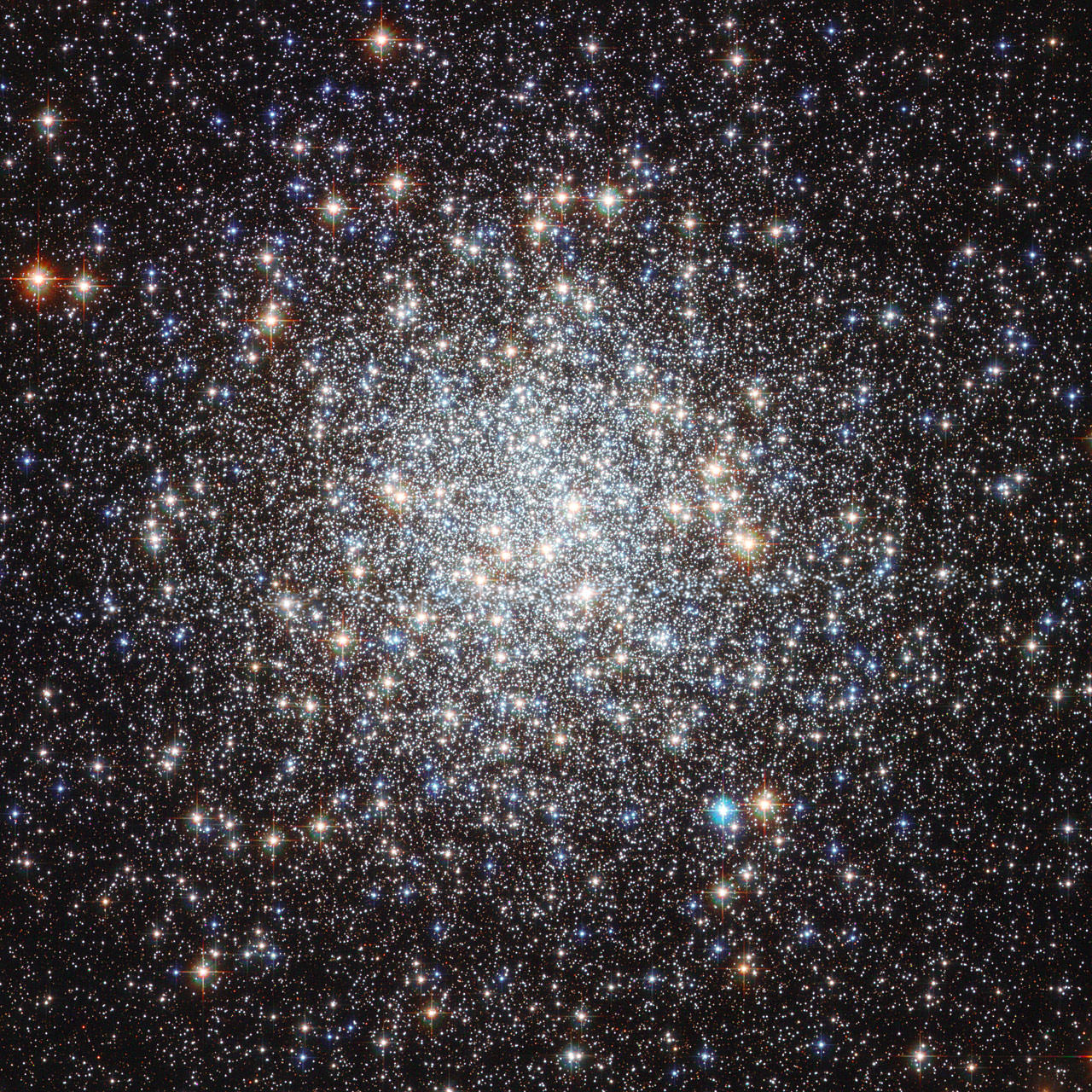[/caption]
First discovered by Charles Messier in 1764, the globular cluster Messier 9 is a vast swarm of ancient stars located 25,000 light-years away, close to the center of the galaxy. Too distant to be seen with the naked eye, the cluster’s innermost stars have never been individually resolved… until now.
This image from the Hubble Space Telescope is the most detailed view yet into Messier 9, capturing details of over 250,000 stars within it. Stars’ shape, size and color can be determined — giving astronomers more clues as to what the cluster’s stars are made of. (Download a large 10 mb JPEG file here.)
Hot blue stars as well as cooler red stars can be seen in Messier 9, along with more Sun-like yellow stars.
Unlike our Sun, however, Messier 9’s stars are nearly ten billion years old — twice the Sun’s age — and are made up of much less heavy elements.
Since heavy elements (such as carbon, oxygen and iron) are formed inside the cores of stars and dispersed into the galaxy when the stars eventually go supernova, stars that formed early on were birthed from clouds of material that weren’t yet rich in such elements.
Zoom into the Messier 9 cluster with a video from NASA and the European Space Agency below:
The Hubble Space Telescope is a project of international cooperation between ESA and NASA. See more at www.spacetelescope.org.
Image credit: NASA & ESA. Video: NASA, ESA, Digitized Sky Survey 2, N. Risinger (skysurvey.org)

